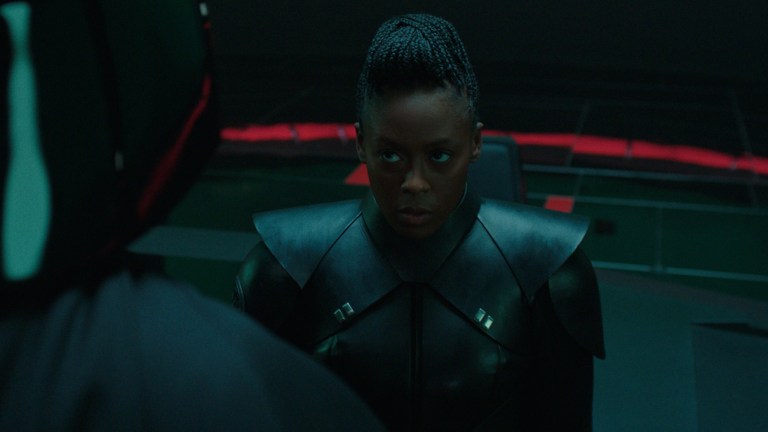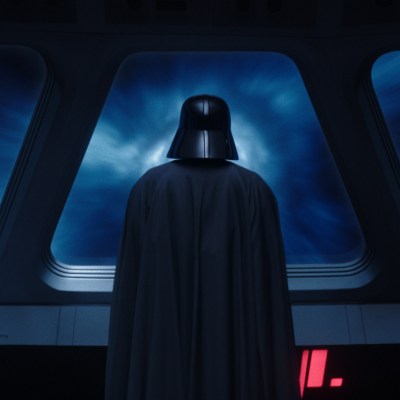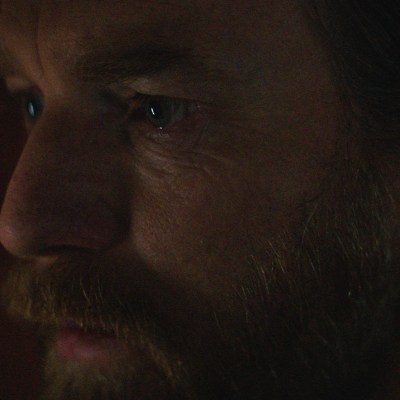Star Wars: Obi-Wan Kenobi Episode 5 Review
An entertaining episode of Obi-Wan Kenobi pulls on Prequel heartstrings despite the show's artificial-looking locations.

This Star Wars: Obi-Wan Kenobi review contains spoilers.
Star Wars: Obi-Wan Kenobi Episode 5
Where is the bar when it comes to Star Wars television? Obi-Wan Kenobi episode 5 wants to evoke the energy (and bigger budget) of the movies, slotting into both the Prequel and Original Trilogies with no-holds-barred aplomb, but it can’t quite pull off the visuals. It’s a pity that Obi-Wan Kenobi hasn’t established enough of an identity to keep me from missing the much more cinematic The Mandalorian. Still, “Part 5” is very entertaining, hooking the show into the larger Skywalker story with good thematic awareness and some unexpected twists.
The Empire has found the rebels on Jabiim. Leia’s hacked droid Lola sabotages the base’s power under orders from Reva. As a reward for her efforts, it seems the Third Sister finally gets what she wants: Darth Vader names her Grand Inquisitor and puts her in charge of retrieving Obi-Wan and Leia. Throughout the episode, Obi-Wan recalls a practice duel with Anakin that reveals Vader’s strengths and weaknesses. The decision not to digitally de-age either Ewan McGregor or Hayden Christensen was a choice between two uncanny options, but definitely comes off as the better one. Makeup and the fact that the two men haven’t aged too much since their last appearances in 2005, make the scene look like it could be a cut moment from Attack of the Clones or The Clone Wars. It’s an absolute treat for Prequel fans.
Back in the present, Obi-Wan digs into Reva’s Force presence enough to discover her backstory. As many fans theorized, she was one of the younglings shown in the Order 66 flashbacks. (This episode, like the first one, has a vague content warning regarding the armed violence toward children.) It turns out that Reva has been nursing her anger at Obi-Wan as Anakin’s master for never preventing the massacre. But her main target is the Sith Lord who killed her family of younglings. She’s playing a very long game, trying to stab Vader in the back when the opportunity presents itself.
Obi-Wan tries to offer Reva a chance, distracting her in the process to buy the Jabiim refugees time to figure out their escape. This plan partially works, though not before the good guys take some casualties. Tala goes down fighting in a moving scene reminiscent of Rogue One. Leia restores the base’s power in time for the good guys to narrowly escape.
But when Vader finally arrives and Reva confronts him, he toys with her before stabbing her in the gut and revealing that the Grand Inquisitor is still alive. (The only explanation for this: he was sustained by his revenge. I love Star Wars. Death, like hyperspace travel times, is mostly metaphor.) Left to die on Jabiim by the Empire, Reva finds Obi-Wan’s broken commlink with a message from Bail revealing that Obi-Wan was protecting another child on Tatooine. Seems like she’s headed there in the finale next week.
It’s almost painful to compare this episode’s straightforward emotional parallels to The Book of Boba Fett‘s far messier bacta flashbacks. The practice duel between Obi-Wan and Anakin does so handily what Boba’s glimpses of his own childhood attempted to do: to parallel the past with the present. It isn’t even subtle; there’s literally a reflection on the floor of the room. But as a glimpse into what feels like a deleted scene from the Prequels, it works.
Unfortunately, the sets continue to be one of the few weaknesses of the show. The Jabiim base is a re-skin of the heroes’ fortifications from The Empire Strikes Back and The Last Jedi, and it’s impossible to ignore the styrofoam look of the cave The camerawork often frames this location with symmetrical, cold competence, giving it less of a lived-in feel than Star Wars has at its best. It’s almost a problem of scale, as if the camera is constantly looking down on these locations instead of operating from eye level. The franchise is still making film history with the experimental combination of practical sets, digital painting, and the Volume, but the seams show more in Obi-Wan Kenobi than in The Mandalorian.
The Mandalorian also still takes the prize for the best TV combat sequences, although the duel between Darth Vader and Reva achieves some impressive characterization. Vader’s utter disinterest in the fight, going so far as to never draw his own lightsaber, perfectly gets across that he’s an unstoppable juggernaut. Like the duel between Vader and Obi-Wan earlier in the show, the way characterization is shown through the swings of a lightsaber or lack thereof is exquisite. It all looks distinctly like it’s happening on a stage, though. More fascinatingly obscure names carved into the rock don’t make the place feel any more lived-in.
The reveals about Reva’s motivations directly comment on Obi-Wan and Anakin’s legendary heroism. She’s essentially operating on headcanons. It’s a pillar of her life that she believes Obi-Wan doesn’t really want to kill Vader or save the Jedi he supposedly champions. At best, to her, he’s an absent parental figure.
And to Vader, Reva is boring. The fact is, her attempts to break the cycle of violence just play directly into it. It’s Sith tradition to try to kill your master, practically Inquisitor protocol to try to rise up the ranks. Maybe this is why Vader is so wonderfully bored when Reva finally does attack him. He doesn’t care about her backstory, about her headcanons about him. He doesn’t even necessarily care about Obi-Wan in the way Reva thinks he does.
Inevitably, Reva’s characterization exists in service of Obi-Wan’s. At times I wanted her to be meaner, if only for more chances for Moses Ingram to show her range: What if instead of biding her time by Vader’s side, she had in fact committed her own atrocities, giving her either more to atone for or more darkness to embrace? It’s a little harder to buy that both Reva and Vader would have been okay with their stalemate for 10 years.
Speaking of timing, six episodes turn out to be the perfect length for this Obi-Wan and Leia adventure. Any more than this, and Leia staying out of sight would be too convenient. Any less, and we wouldn’t have enough time to get to know side characters like Tala. There’s definitely discussion to be had about who in the Star Wars canon gets the luxury of merely-metaphorical death, but Reva’s central role and how earned Tala’s tragedy is mean Tala doesn’t feel fridged here.
Although Obi-Wan’s perspective on Reva’s plan feels a bit muddled by the end, the show continues to keep me hooked. For all that I mentioned a lack of identity earlier, it does seem to have a distinct understanding of what it wants: to put the Obi-Wan and Anakin relationship first, to evoke both the Prequel and Original Trilogies, and to lean into Skywalker drama as much as The Mandalorian avoided it.


